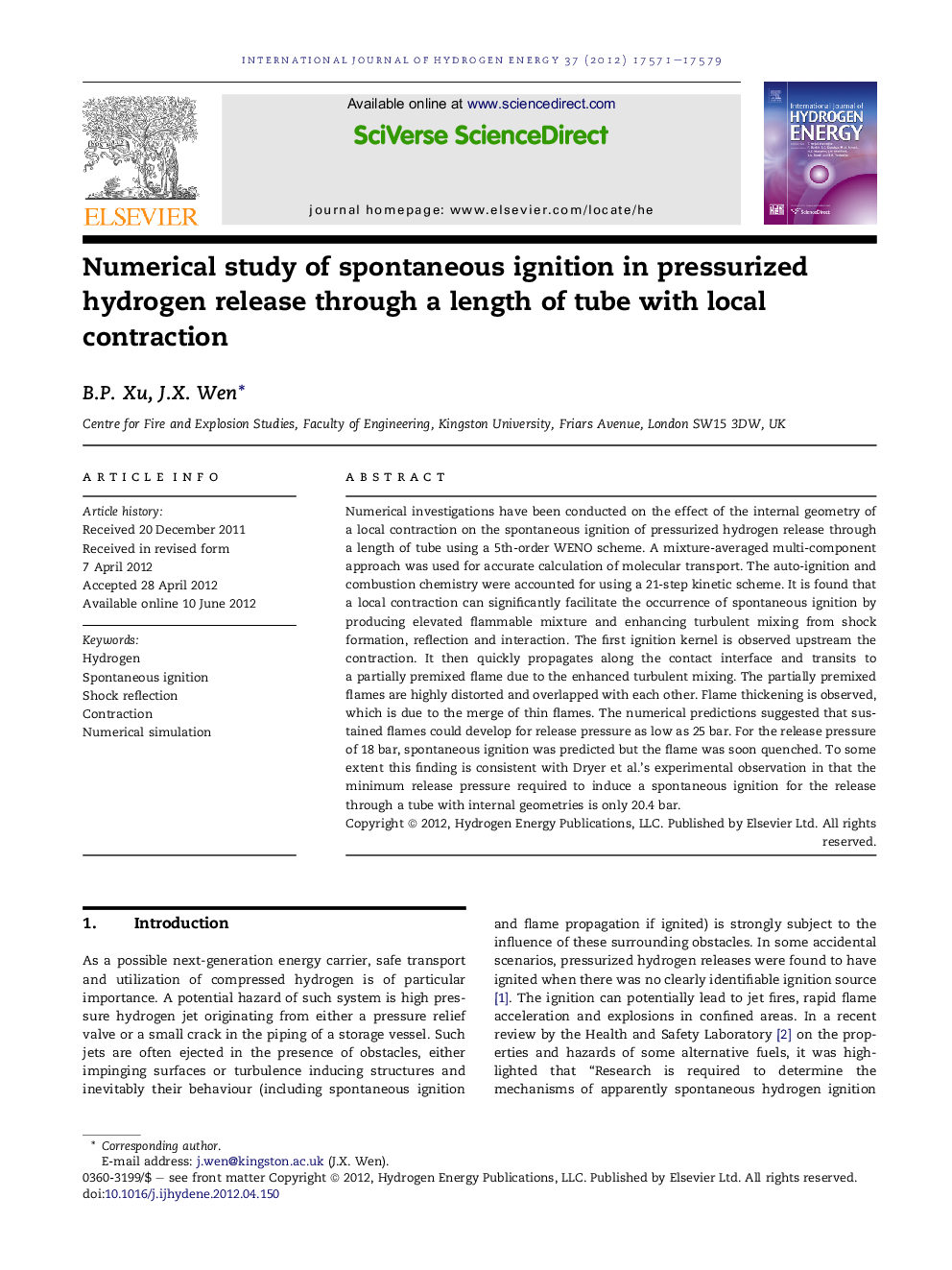| Article ID | Journal | Published Year | Pages | File Type |
|---|---|---|---|---|
| 1270945 | International Journal of Hydrogen Energy | 2012 | 9 Pages |
Numerical investigations have been conducted on the effect of the internal geometry of a local contraction on the spontaneous ignition of pressurized hydrogen release through a length of tube using a 5th-order WENO scheme. A mixture-averaged multi-component approach was used for accurate calculation of molecular transport. The auto-ignition and combustion chemistry were accounted for using a 21-step kinetic scheme. It is found that a local contraction can significantly facilitate the occurrence of spontaneous ignition by producing elevated flammable mixture and enhancing turbulent mixing from shock formation, reflection and interaction. The first ignition kernel is observed upstream the contraction. It then quickly propagates along the contact interface and transits to a partially premixed flame due to the enhanced turbulent mixing. The partially premixed flames are highly distorted and overlapped with each other. Flame thickening is observed, which is due to the merge of thin flames. The numerical predictions suggested that sustained flames could develop for release pressure as low as 25 bar. For the release pressure of 18 bar, spontaneous ignition was predicted but the flame was soon quenched. To some extent this finding is consistent with Dryer et al.'s experimental observation in that the minimum release pressure required to induce a spontaneous ignition for the release through a tube with internal geometries is only 20.4 bar.
► The effect of a local contraction in the release tube on the spontaneous ignition is investigated. ► The flow structure at contraction is influenced by shock formation, reflection and interaction. ► The shock reflection significantly enhances heating and the propensity to spontaneous ignition. ► Ignition kernels form at the thin contact region and evolve into partially premixed flames. ► The partially premixed flames quickly thicken due to the enhanced turbulent mixing.
